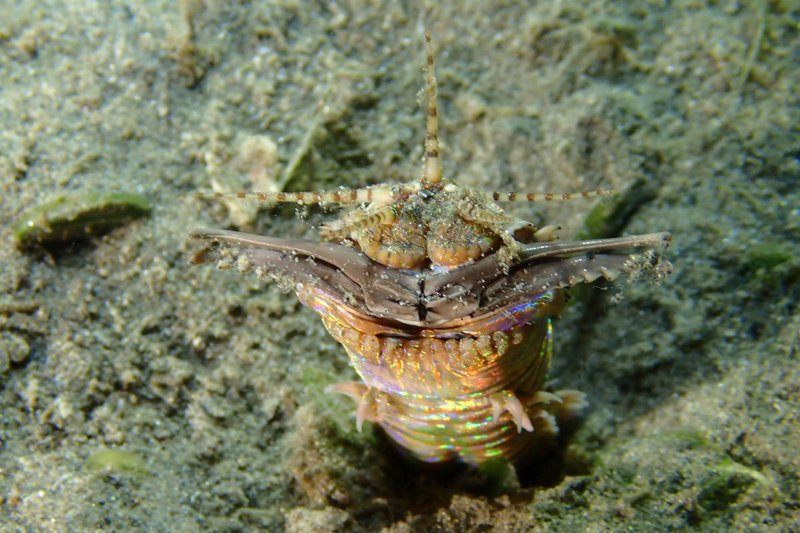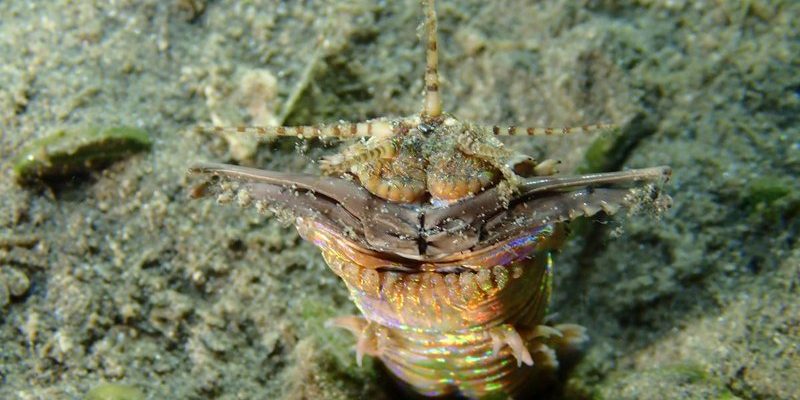
Now, let’s dive deeper into what exactly makes these worms so effective at hunting. From their unique hunting methods to their physical adaptations, Bobbit worms have developed some fascinating traits that ensure their survival in the competitive underwater world. So, grab your favorite beverage, and let’s explore the extraordinary adaptations of these ocean predators.
1. Camouflage: The Art of Disguise
One of the standout traits of Bobbit worms is their ability to **blend into their surroundings**. Their bodies are long and thin, often mimicking the colors and textures of the sandy ocean floor. This natural camouflage is crucial for their hunting strategy. Just like a perfectly hidden Easter egg, they can stay unseen by both prey and predators alike.
When a fish or other unfortunate creature swims too close, the worm remains perfectly still. This stealth approach allows it to surprise its meal, making the hunt more successful. You might say it’s like playing hide-and-seek—except the Bobbit worm always wins.
Creating a perfect disguise isn’t just a matter of luck; it’s a quintessential survival skill. Over time, those Bobbit worms that can camouflage themselves effectively have had the best chances of catching food and avoiding predators. This trait, honed over generations, has made them the successful hunters we see today.
2. Speedy Strike: Lightning Reflexes
Here’s the thing: **Bobbit worms are not just good at hiding—they’re also incredibly fast**. When prey ventures too close, these worms can strike with astonishing speed. Their reaction time is something to marvel at; they can lunge forward and grab their meal before it even knows what hit it.
This speed is thanks to their muscular bodies and specialized appendages. The main part of their body acts like a spring, allowing them to launch themselves forward in a split second. Imagine having the sudden ability to leap as quick as a cheetah; that’s how effective these worms are.
In addition to speed, their unique jaws are designed for grabbing and holding onto slippery prey. With sharp teeth and a powerful bite, Bobbit worms can quickly immobilize fish, mollusks, and other critters. This combination of speed and strength makes them top-tier hunters in their underwater homes.
3. Strong Sense of Vibration: Tuning into Prey
You might be wondering how these worms know when prey is nearby. Bobbit worms have an excellent sense of **vibration detection**, which is crucial for their hunting technique. They can detect even the faintest movements in the water, allowing them to sense when a fish or another animal is swimming nearby.
Think of it like a spider waiting in its web. When a fly gets caught, the spider feels the vibrations and knows it has dinner. Similarly, Bobbit worms can feel the tiniest disturbances caused by potential meals. This ability keeps them in tune with their environment, enhancing their chances of a successful hunt.
This evolutionary trait has been crucial for their survival. Over time, those worms that could sense disturbances more effectively were better at hunting, leading to greater success in feeding and reproduction. It’s all about staying ahead in the game of life underwater.
4. Sharp, Retractable Jaws: A Hunter’s Tool
Let’s not forget about the **Bobbit worm’s impressive jaws**. These are not just any jaws; they’re sharp, retractable, and perfectly adapted for hunting. When in a relaxed state, the jaws are tucked away, keeping them safe from damage. But when it’s time to strike, they spring into action.
These jaws allow the Bobbit worm to grasp and hold onto its prey tightly. The design offers a dual advantage: it can quickly bite down on food while also preventing escape. You could say they have nature’s version of Swiss Army knives—versatile and effective for their hunting needs.
This trait has evolved beautifully over time. Bobbit worms with stronger jaws could catch larger prey or hold on to slippery ones, significantly enhancing their chances of survival. It’s a fascinating example of how evolution tailors creatures for success in their environment.
5. Long, Flexible Body: Advantages in Movement
Another remarkable trait of Bobbit worms is their **long, flexible bodies**. These worms can extend and retract their bodies with ease, giving them the ability to navigate various habitats. Their flexible structure allows them to burrow into the ocean floor, hide from predators, and reach out to grab prey without much effort.
This adaptability is key. Depending on their environment, they can alter their hunting strategy. In open waters, a long body helps them reach further distances when striking at prey. In contrast, when hiding, they can remain coiled up, making them less visible.
Over time, natural selection favored Bobbit worms that could maneuver effectively in different conditions. This flexibility not only aids in hunting but also in escaping threats. It’s a survival tactic that showcases the brilliance of evolution.
6. Resilient Exoskeleton: Nature’s Armor
Last but not least, Bobbit worms have a tough **exoskeleton**. This strong outer layer protects them from predators and environmental threats. It’s like wearing a suit of armor, making it less likely for larger fish to eat them.
This resilience allows them to thrive in diverse marine environments. Bobbit worms can live in areas where many other creatures might struggle. The armor-like exoskeleton has helped them survive encounters with predators that might not think twice about attacking other, softer-bodied sea animals.
The development of this protective trait highlights how evolutionary pressures shape species over time. Those with stronger exoskeletons were more likely to survive and pass on their genes, resulting in the robust Bobbit worms we see today.
In summary, the Bobbit worm is a prime example of evolution’s ingenuity. From their **exceptional camouflage** to **lightning-fast strikes**, every trait has been fine-tuned for one purpose: hunting effectively. It’s a fascinating mix of adaptations that not only help them catch prey but also ensure their survival in a competitive underwater world.
Whether you’re just curious about ocean life or diving deeper into marine biology, understanding the Bobbit worm’s hunting prowess offers insights into how life evolves and adapts. Next time you think about effective hunters in the ocean, remember this hidden gem of the sea and appreciate the complexity and beauty of nature’s designs.

